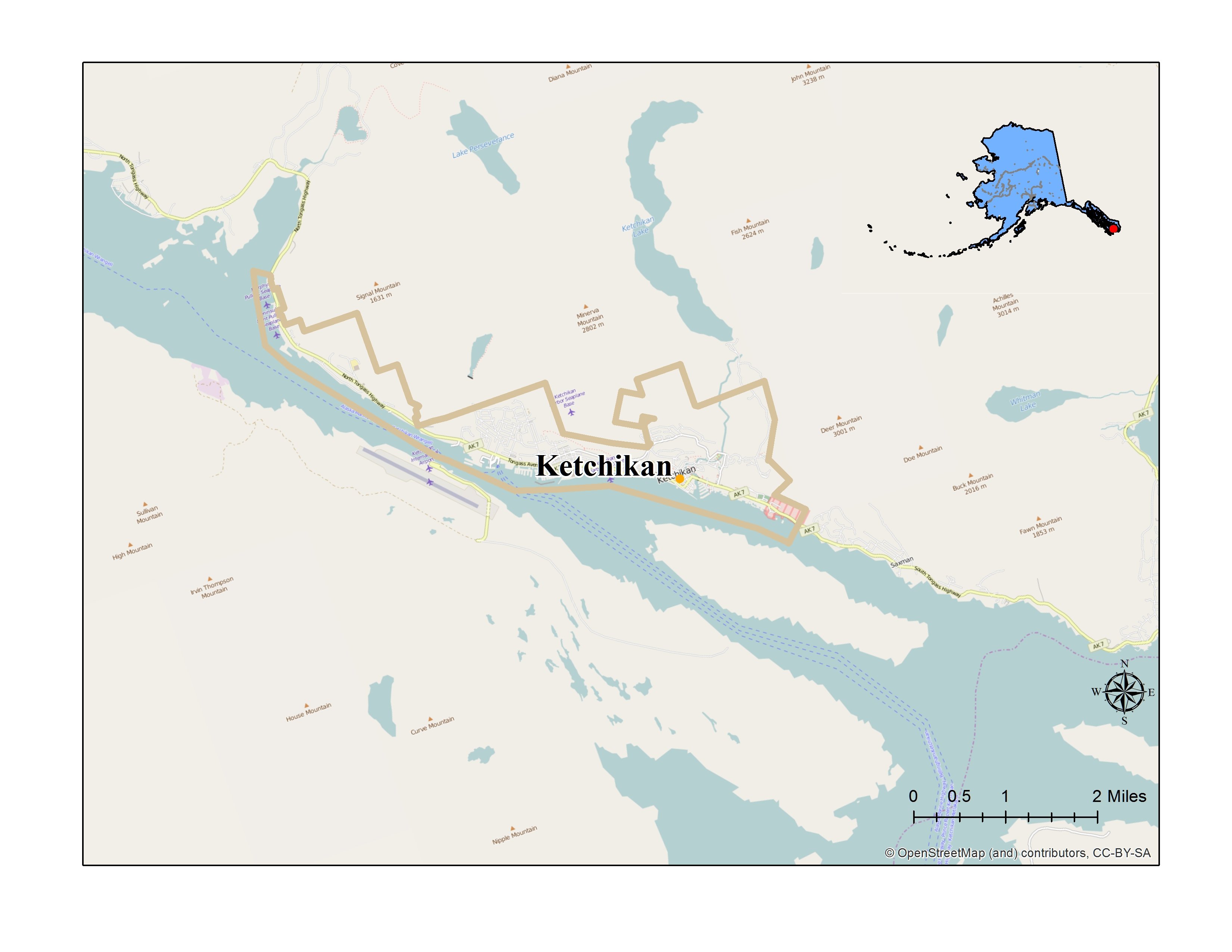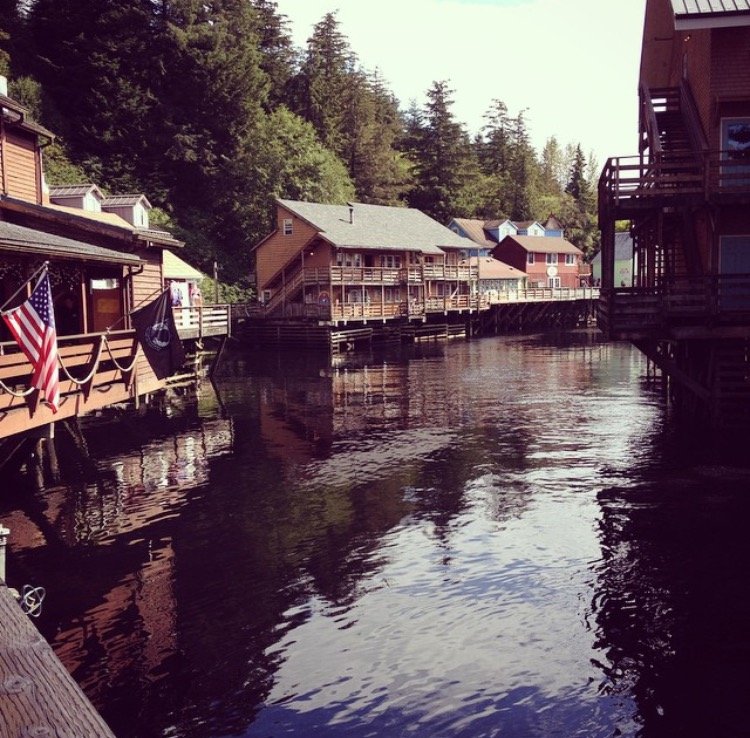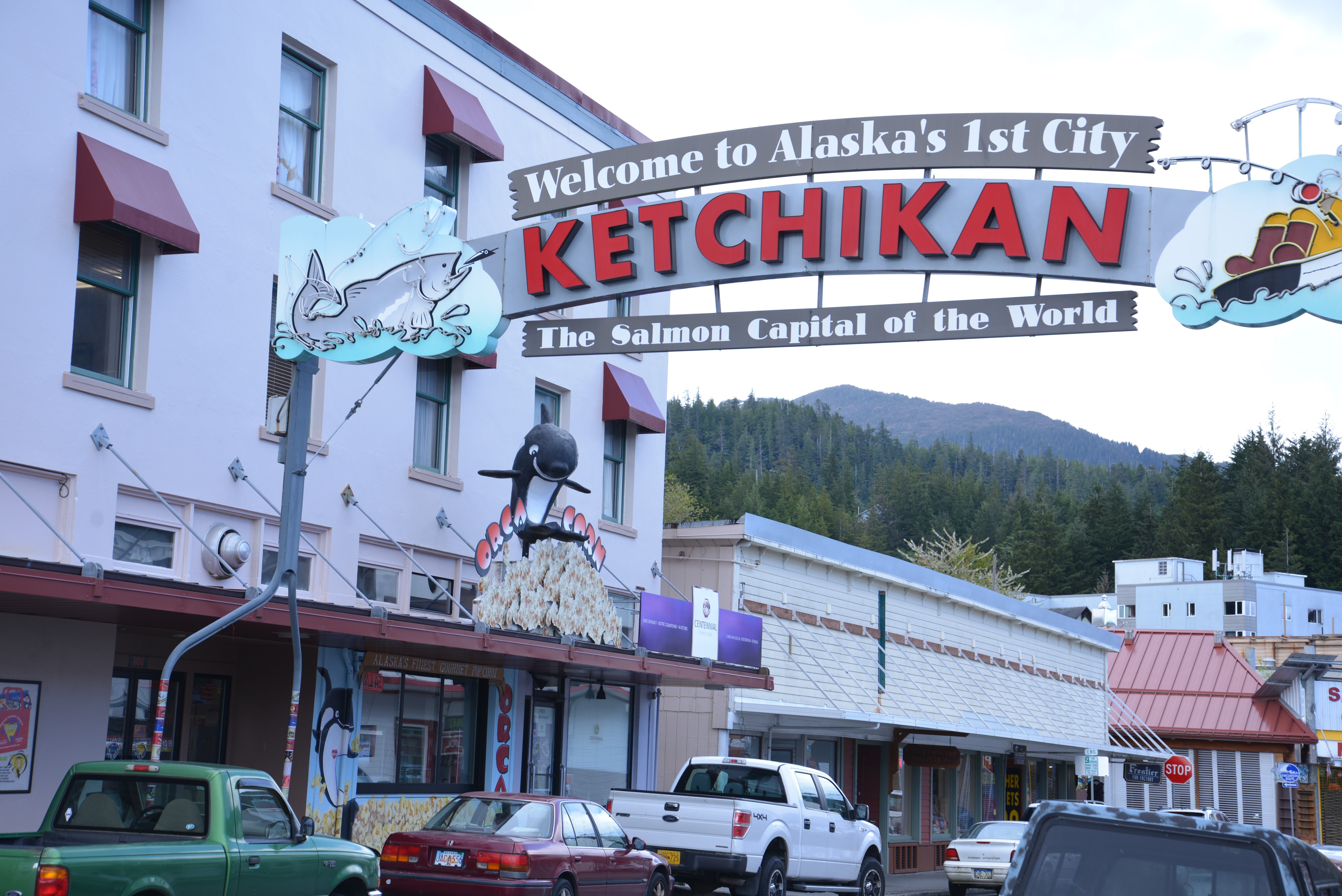City of Ketchikan
Home Rule City
2022 Population: 7,998
Size: 4 Square Miles
Ketchikan Historic Commission: 10 members, to the extent feasible, include an architect or historical architect, an archaeologist, and a historian. One member shall be a member of the city council or appointee; one shall be a member of the Ketchikan Gateway Borough planning commission or an appointee; one shall be a member of the Tongass Historical Society or an appointee.
Meets: Every-other month/as needed
Date certified: January 31, 1991

-
CLG Grants

Historic Preservation Planning Grants
Stedman-Thomas Historic District Guidelines and Draft Zoning Ordinance. 2002.
Survey and Inventory Grants
Downtown and Creek Street Surveys. 2010.
Hopkins Alley/Warren/Harding Neighborhood Survey. 1998.
Salmon in Cans: A Historical Survey of Ketchikan's Canneries. 1995.
Stedman-Thomas Building Survey. 1991.National Register of Historic Places Grants
Stedman-Thomas National Register Nomination. 1993.
Grant Street Trestle National Register Nomination. 1992.Commission Training Grants
Economic Perspectives: Making the Historic Preservation Connection Workshop. 1993; 1994.
Alaska Heritage Development Conference. 1994.
-
A Brief History
-
For generations, Tlingit Native peoples maintained a seasonal fish camp at the mouth of Ketchikan Creek, a central feature of downtown Ketchikan. Early explorers and traders keyed into the local abundance of salmon, halibut and eulachon ("ooligan"), and in 1883 the area's first fish saltery was built, quickly followed by numerous canneries. Ketchikan incorporated in 1900.
In addition to fishing, mining, and logging were major early industries of Southern Southeast Alaska, and Ketchikan developed as a major supply center. Mining in the area was not just for gold, but also for copper, marble, and many industrial minerals. Established in 1903, Ketchikan Power Company operated a spruce mill, which supplied power to the young town. The company became the Ketchikan Spruce Mills in 1923 and provided lumber and salmon packing boxes for over seventy years. The majority of the land around Ketchikan was absorbed as part of Tongass National Forest in 1909. The Forest Service leased areas for timber cutting, and logging in southern Southeast Alaska increased during World War II. In 1954 a pulp mill opened at Ward Cove, north of downtown Ketchikan, and operated until 1997 as the area's major employer.
Ketchikan has also supported a rich maritime history, with the United States Lighthouse Service and later the U.S. Coast Guard having a large presence. Shipbuilding and repair have been healthy industries over the years, a tradition still very much alive today.
The many industries attracted Scandinavians, Japanese, Filipinos, and area Tlingit, Haida and Tsimshian people to the town. The Stedman--Thomas Historic District represents the community's ethnic diversity.
Tourism has been a staple of Ketchikan's economy with regular steamship service from Seattle and British Columbia arriving weekly in the early 1900s. Ketchikan advertised itself as "Alaska's First City" and "Salmon Capitol of the World". Many businesses developed to support the tourism market, including hotels and curio and souvenir shops. In the 1930s, the Civilian Conservation Corps undertook projects around Ketchikan to develop Alaska's tourism in the form of totem parks and recreation areas. Today, Ketchikan has the largest concentration of totem poles in the world.
Ketchikan also touts its unique boardwalk and trestle and wooden stair "streets" on the steep hillsides bordering the waterfront. Downtown Ketchikan and its neighborhoods contain an abundance of historic buildings. Ketchikan's Creek Street, now a historic district, was nationally infamous throughout the 1930s as a hotbed of sin and corruption supporting brothels and bootlegging during Prohibition in the wild Last Frontier.
-
-
National Register of Historic Places Listings
Alaska Totems Park and Deermount Aves. (Totem Heritage Center) Burkhart-Dibrell House 500 Main St. Creek Street Historic District Creek Street, Married Man's Trail, and Totem Way First Lutheran Church 1200 Tongass Ave. Gilmore Building 326 Front St. Guard Island Lighthouse Guard Islands, 9.6 mi. NW of Ketchikan Ketchikan Federal Building 648 Mission St. Ketchikan Ranger House 309 Gorge St. Mary Island Light Station 10. mi S of Ketchikan Stedman--Thomas Historic District Stedman, Thomas, Inman, Brown, and Tatsudas Sts. The Star 5 Creek St. Totem Bight State Historic Site Tongass Hwy. Walker-Broderick House 541 Pine St. Ziegler House 623 Grant St. Clover Pass School Potter Rd. Chief Kashakes House Mile 2.5 S. Tongass Hwy. Saxman Totem Park S. Tongass Hwy. Tree Point Lighthouse 45 mi. S of Ketchikan

